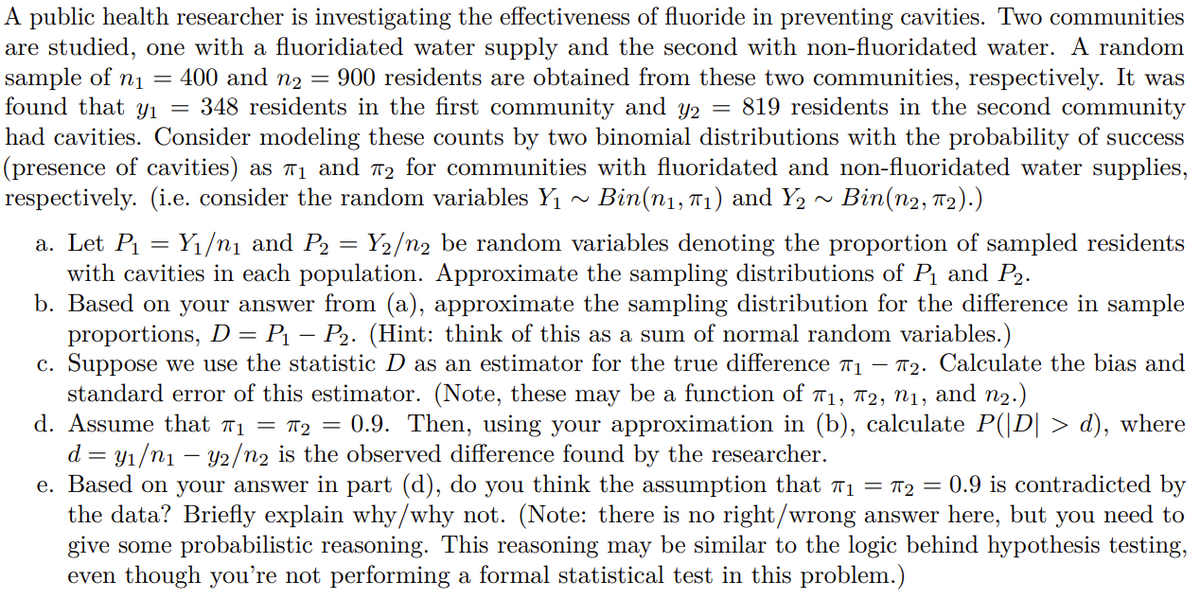A public health researcher is investigating the effectiveness of fluoride in preventing cavities. Two communities are studied, one with a fluoridiated water supply and the second with non-fluoridated water. A random sample of n1 = 400 and n2 = 900 residents are obtained from these two communities, respectively. It was found that y1 = 348 residents in the first community and y2 = 819 residents in the second community had cavities. Consider modeling these counts by two binomial distributions with the probability of success (presence of cavities) as ī1 and 72 for communities with fluoridated and non-fluoridated water supplies respectively. (i.e. consider the random variables Y1 ~ Bin(n1,T1) and Y2 ~ Bin(n2, 12).)
Compound Probability
Compound probability can be defined as the probability of the two events which are independent. It can be defined as the multiplication of the probability of two events that are not dependent.
Tree diagram
Probability theory is a branch of mathematics that deals with the subject of probability. Although there are many different concepts of probability, probability theory expresses the definition mathematically through a series of axioms. Usually, these axioms express probability in terms of a probability space, which assigns a measure with values ranging from 0 to 1 to a set of outcomes known as the sample space. An event is a subset of these outcomes that is described.
Conditional Probability
By definition, the term probability is expressed as a part of mathematics where the chance of an event that may either occur or not is evaluated and expressed in numerical terms. The range of the value within which probability can be expressed is between 0 and 1. The higher the chance of an event occurring, the closer is its value to be 1. If the probability of an event is 1, it means that the event will happen under all considered circumstances. Similarly, if the probability is exactly 0, then no matter the situation, the event will never occur.

Trending now
This is a popular solution!
Step by step
Solved in 3 steps









